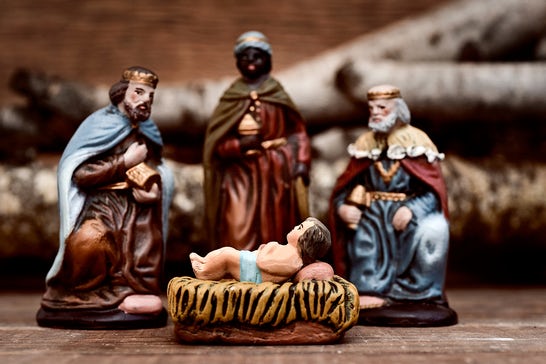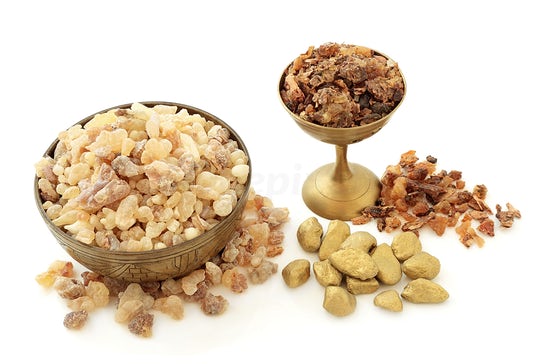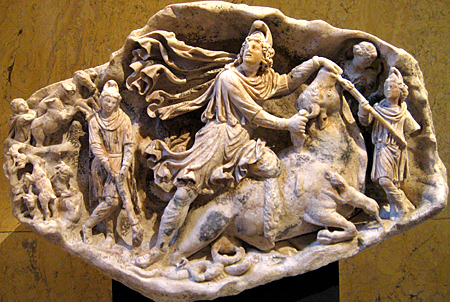Disclaimer: The information on curenaturally.org is intended to improve your knowledge about herbs and their benefits. Articles on this website are not intended to replace medical treatment from your doctor. Always consult your doctor before starting a new treatment regimen.
Page Update 12.03.2018
Frankincense
By Dr.Ashraf Girgis N.D.

Frankincense is resin and dried sap obtained from the tree commonly known as Boswellia sacra. It belongs to the family of Burseraceae (Genus Boswellia). There are about 540 species in this family: frankincense, myrrh, olibanum, and opopanax are the resinous ones, and they are obtained from trees Boswellia and Commiphora. The resin is obtained by creating an incision into the trunk of the tree. The hardened orange and dark brown color excretion is called frankincense.
We have all heard the story of the three Persian wise men (or Magi, priests in an Iranian Zoroastrian religion). These wise men were known to follow the star (Iranians were very advanced in astrology), ending up in Bethlehem in a manger at the time of Jesus’s birth. We have also heard how they brought as gifts gold, frankincense, and myrrh. Mathew is the only gospel writer who mentions this event in the Bible:
Matthew 2:1 - "After Jesus was born in Bethlehem in Judea, Magi from the east came to Jerusalem."
Matthew 2:7 – “Then Herod called the Magi secretly and found out from them the exact time the star had appeared.”
Matthew 2:16 – “When Herod realized that he had been outwitted by the Magi, he was furious, and he gave orders to kill all the boys in Bethlehem and its vicinity who were two years old and under, in accordance with the time he had learned from the Magi.”
|
|
|
In addition to this story, in Mithraism – another ancient, pre-Zoroastrian religion which originated in Iran and existed from 3000~ to 2800 BC – people were worshiping the sun as their God. They used incense in their religious ceremonies. Romans also followed Mithraism. Some historians erroneously claim Mithraism in the Roman Empire was different, because it has an extra “S” at the end of Mithraism.
Additionally, the Zoroastrian religion has thousands of followers inside todays Iran, and there are many other undeniable similarities between it and Mithraism. These so-called historians continue to separate the two religions, instead of being one which originated from Iran and was practiced not only by Romans but also by Syrians and other Europeans. It seems that these days, in the age of internet, history is totally manipulated; identity theft of historical facts seems rampant. Many so-called experts make up stories as they go, trying to avoid mentioning the name of Iran, Persia, or other names associated with Iran’s long history. These experts bypass history without giving credit to this ancient nation.
|
 |
|
As a naturopathic doctor who is writing about herbs and food and fruits and many ancient practices, I notice this very frequently. I hope that independent academics who give importance to authentic history work to prevent this ignorance. Too often, many herbs and foods which originated in greater Iran are erroneously attributed to others without ANY credit given to Iran. These other countries often simply adapted Iranian culture or did not exist at the time as a country. They were Iranians or small dynasties or tribes under Persian rule. The reason these other people groups had such important medical advances was because of ancient Iranian contributions. For example, Iran built the first hospital in Egypt and Baghdad in 500 B.C., during the Persian empire.
|
|
| Now let’s go back to Frankincense. After the Romans converted to Christianity, they maintained many of the tenets of Mithraism (good vs. evil, light vs. darkness) and of Iranian tradition, assimilating them into Christianity. For example, the winter solstice celebration in Iran dating back thousands of years occurs at the same time as the Christmas holidays. Winter Solstice celebrated the god Mithra, who was the god of light over darkness. Yalda, on the 22nd of December is the celebration of the rise of the sun over the darkness. Iranians celebrate by spending time with family and friends, reading poetry and telling stories together. They share watermelons, apples, pears, oranges, tangerines, cucumbers, pomegranates, all kinds of nuts, and sweets made out of chick peas and rice. It is believed that Roman emperors who followed Mithraism celebrated this holiday, and after conversion to Christianity they simply kept many elements of Iranian Mithraism, including Jesus birthday. |
 |
The main reason to discuss this story is to show that incense such as frankincense was used in ancient greater Iranian religious ceremonies and later adapted to other religions, including Christianity. Frankincense has also been used in Egypt, Yemen, Somalia, India, Sudan, Ethiopia, and Kenya, and many other places since ancient times. Currently, 80% of frankincense export and production is from Somalia (myrrh and opopanax – 1500 tons in 1987).
Other names for frankincense include: Boswellia serrata (Salai/Salai guggul), Olibanum, Opopanax, and Guggul (Commiphora and Boswellia).
|
|
|
|
Constituents:
The gum obtained from the tree consists of many essential oils. Guggulsterone (GS) and boswellic acid (BA) are obtained from Commiphora and Boswellia. Additionally, there are lignans and ketosterols in these oils. Lignans and ketosterols are important to the many health benefits of frankincense (Arora et al., 1971, Francis et al., 2004). pentacyclic triterpenic acids (boswellic acids), triterpenes,triterpenic acids . Today, extracts are typically standardized to contain 37.5-65% of boswellic acids.
|

|
|
|
|
Health Benefits:
|
Since ancient times, the gummy exudate has been used in many places for religious as well as other purposes. In ancient Iran it was used for perfume and treating diabetes, diarrhea, and worm. In China, it was used for its anti-bacterial effects. In Egypt it was used for mummification and for perfume purposes. In India it was used for obesity, liver dissections, and curing tumors.
Oleogum resin (guggul) from the guggul tree, Commiphora mukul, has been used in Pakistan and Bangladesh for treating diarrhea, ring worm, and arteritis. It is known to help with various kinds of arteritis, including osteoarthritis and rehumatoid arthritis.
|
 |
In modern science, the standardized extract of gum oleoresin of boswellia taken for treatment of arteritis and osteoarteritis. In a study published in the Cardiovascular Drug Review Journal in the winter of 2007, scientists used Oleogum resin (known as guggul) found in trees in Pakistan, India, and Bangladesh. The conclusion by the scientists was: “A recent study demonstrates that guggulsterone upregulates the bile salt export pump (BSEP), an efflux transporter responsible for removal of cholesterol metabolites, bile acids from the liver. Such upregulation of BSEP expression by guggulsterone favors cholesterol metabolism into bile acids, and thus represents another possible mechanism for its hypolipidemic activity. Guggulsterone has been found to potently inhibit the activation of nuclear factor-kappaB (NF-kappaB), a critical regulator of inflammatory responses. Such repression of NF-kappaB activation by guggulsterone has been proposed as a mechanism of the antiinflammatory effect of guggulsterone.” (Deng R et al 2007)
|
|
|
|
In another study by Man Barton Frank (et al.) in Arthritis and Immunology Research at Oklahoma Medical Research. Published on line March 2009. Scientists studied the effects of Frankincense oil on bladder cancer, this was their conclusion:
“Frankincense oil appears to distinguish cancerous from normal bladder cells and suppress cancer cell viability. Microarray and bioinformatics analysis proposed multiple pathways that can be activated by frankincense oil to induce bladder cancer cell death. Frankincense oil might represent an alternative intravesical agent for bladder cancer treatment.” (Frank et al.)
|

|
Frankincense has many other benefits; among those are its anti-inflammatory benefits (Ban et al 2006). Its anti-inflammatory action is attributed to its ability to regulate cytokine, an important protein in regulating cell behavior (Chevrier MR et al 2005).
As stated previously, frankincense obtained from resins of Boswellia carteri and Boswellia serrata has been used for the treatment of rheumatoid arthritis and other inflammatory diseases, including Crohn's disease, in many countries.
There are hundreds of publications on Commiphora and on Boswellia: 207 on guggulsterone, 329 on boswellic acid, and 90 on guggul alone, all by 2006. All these studies highlight the “Antiarthritic and anti-inflammatory activity of the gum.” In addition, hundreds of publications show the “Analgesic effect of the gum resin from Boswellia serata.” Other uses include lowering cholesterol and triglycerides and healing inflammatory bowel disease.
Dosage:
Dosage depends what kind of resin is used. For example, the recommendation for pure guggul extract depend on amount of guggulsterones in the extract. Most common is an intake of 25 mg of guggulsterones three times a day; most extracts contain 2.5-5% guggulstrones. For example, to lower cholesterol levels, guggulsterones is taken for 12 to 24 weeks.
In treating arteritis, boswellia acids with an extract containing 37.5% acid are taken three times a day. In treatment of ulcerative colitis, 550 mg of boswellia extract is given three times a day.Unless you are meeting with a professional herbalist or a naturopathic doctor, follow the instructions on the label.
Side effects:
Please consult your primary doctor before taking any herbs. Boswellia is usually safe, but side effects such as skin rash, diarrhea, and nausea have been observed in some individuals.
Enjoy your healthy garden and stay away from chemicals such as Roundup.
Thanks for visiting www.curenaturally.com
|
|
|
|